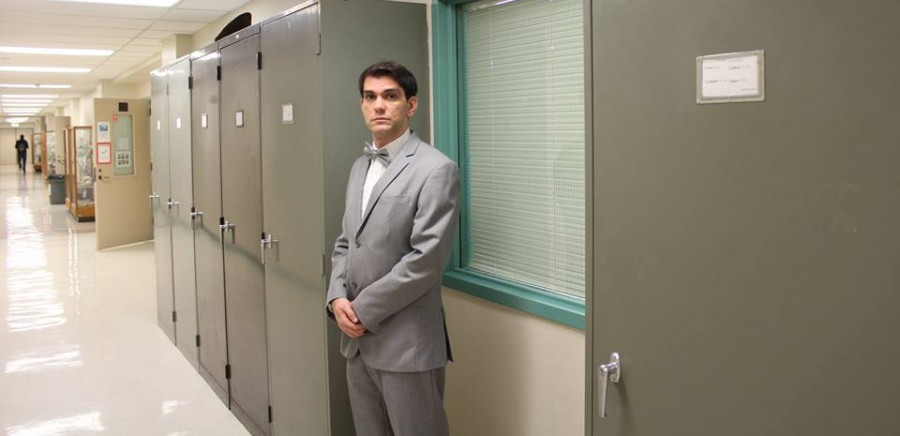Aleksi Baznekian has an incredible eye for detail. As a botanist this is an asset, but as GCC’s Herbarium Curator it is a necessity. In the world of categorizing angiosperms (flowering plants), noticing tiny details in bracts and seed pods can make all the difference in accurate plant classification. That ability can mean the difference between medicinal and poisonous, weed and food, and lead to the identification of undiscovered species.
This summer, Baznekian, a Glendale alumni, finished work on the Joseph Keefe Herbarium, located in the Biological Sciences wing of the San Gabriel Building. The late Joseph Keefe was a faculty member in the Biology Division for 26 years. During his tenure at GCC, Keefe built a collection of more than 1,000 plant specimens that have been used by hundreds of students. Unfortunately since Keefe’s death in 2001, the collection has fallen into ruin. Insects ate some of the flowers, paper and glue degraded, and many specimens were not classified correctly. Baznekian invested nearly 750 hours of volunteer time to finish the herbarium under 10 months, sometimes working for 12 hours at a stretch.
Some of the oldest plant specimens in the collections are from the 1920s, and there is evidence that Glendale College once had a greenhouse. Joe Keefe and his students collected the majority of specimens, and Glendale once had a robust botany program. The main purposes of a herbarium are research, teaching and education. The specimens are more than simply pressed flowers, although some of them are quite beautiful. They represent all of the parts of a plant roots to seeds, notes about where plant was collected, taxonomy and a wealth of other data. Scientists, students, government technicians and environmental consultants may use the plant reference collection in studies involving environmental impact, plant ecology, botany, evolution, systematics and paleobotany.
Baznekian proposed a complete makeover of the herbarium and, working under the administration of the Biology Department, obtained a GAUSS Grant to provide funds to revitalize and manage the plant specimens. Baznekian taught select students professional techniques used in research herbariums including the restoration of the original damaged specimens, collecting and preparing new specimen vouchers, and creating a searchable database.
Staci Markos, one of the producers of the new Jepson Manual, the bible of California plant identification, and the developer of CCH (Consortium of California Herbaria) admired Baznekian’s work and invited him to contribute GCC’s plant collection data into CCH’s massive database. Only one community college is on their site as a contributor, the rest are major museums and universities. “This would put GCC on the map and on a new frontier,” says Baznekian with pride.
Markos isn’t the only impressed botanist. The curator of Cal State Northridge’s herbarium, Dr. James N. Hogue, came to inspect the herbarium once it was completed, and raved about it. “In my opinion, and perhaps in fact, it is the finest and most perfect herbaria in southern California, being merely overshadowed by other herbaria due to their large collection sizes,” says Baznekian.
Baznekian, who went on to earn his bachelor’s in biology at Northridge, is negotiating with Cal State L.A. to oversee the restructuring of their herbarium as well, continuing his work in connecting California’s botanical collections. The Joseph Keefe Herbarium houses 929 vouchers (separate cards with plant specimens glued to them), with 575 species representing 140 families. Two vouchers, one of Eriogonum rixfordii and the other, Juniperus californica, were instrumental in shedding new information about the natural history of these species.


